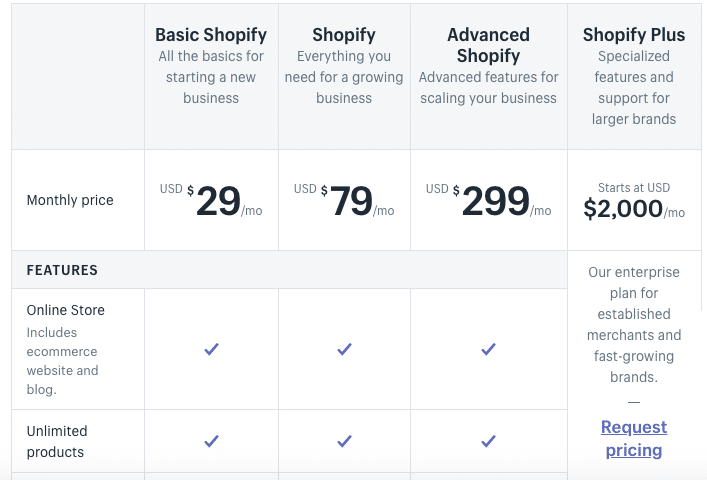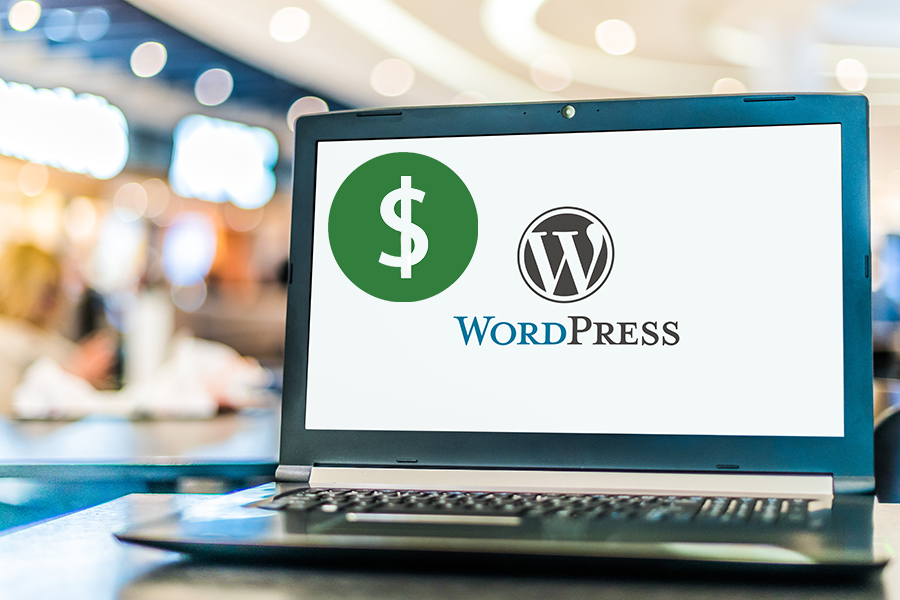
Change is always the name of the game when it comes to online retail, and while many consumers are happy to support a tried-and-true brand, even your most loyal audiences may not stick around long-term if your eCommerce site doesn’t offer the technical functions and benefits consumers have come to expect. And eCommerce sites that aren’t keeping up when it comes to SEO have a different struggle: They aren’t pulling in the new customers necessary to thrive and grow.
Because of this, older eCommerce sites are struggling to keep up, making it important to update to newer technology and platforms. But even if you’ve come to this conclusion about your online store, you may not know which option to choose. We’ll compare WooCommerce vs Shopify below to help you identify which is best for your online store.
WordPress vs Shopify: Some High-Level Definitions
Both options allow you to launch a website and even monetize it or add shopping cart capabilities.
Shopify
However, Shopify is a web app designed specifically for this purpose. Everything you need to build a Shopify app store for your brand is built into the system, which means you don’t need coding or development skills to get the job done. You simply choose a theme and customize it for your store.

WordPress
It is a bit more complex overall. It’s not a singular solution meant to solve eCommerce problems for people without coding skills. It’s a comprehensive publishing and site-development solution that lets people of all skill levels build whatever type of site they need, including eCommerce. WordPress users who want to develop a new eCommerce store or add one to their current setup can use a plugin called WooCommerce, which integrates with most existing WooCommerce themes to add secure, functional eCommerce options to a site.
How Do Shopify and WordPress Stack Up as eCommerce Solutions?
Both WooCommerce and Shopify do offer some out-of-the-box functionality, though, for newbies, Shopify’s are probably easier to set up at the most basic level. Since WooCommerce sits on top of the greater platform of WordPress functionality, though, it does allow for more flexibility. Companies that have plans for their site aside from basic product sales may want to make the effort to learn some of WordPress’s more advanced functions or work with a WordPress development and management firm.
We took a look at specific details, from initial setup to fee structures, for both options and broke them out for you below.
Initial Setup of Your Site
The basic checklist for launching a site includes a domain name, hosting, and theme or template (if you’re not going to code your site from scratch). Both WordPress and Shopify offer ways for you to check these things off your list.
A Shopify store runs on Shopify servers, which means your domain and hosting is included in your package. You pay per month for all the included services, and what you get depends on the package you opt for. Pricing as of March 2019 was:
- $29 per month for Basic Shopify
- $79 per month for Shopify
- $299 per month for Advanced Shopify
- $2,000 and up per month for Shopify Plus, which is a specialized service for large brands
Since the WooCommerce plugin is an add-on function for WordPress sites, it doesn’t cost anything. But it doesn’t come with domains or hosting either. You’ll have to buy your domain from WordPress or another provider and choose a web hosting package — also from your hosting provider of choice. While this entails dealing with potentially more than one company (you can purchase all these things direct from WordPress), it also lets you shop around or work with companies you already trust. The total cost will depend on which providers you work with and what types of packages you choose.
Both Shopify and WordPress provide free and paid templates for developing your site without coding.
Fee Structures for eCommerce Transactions
The initial setup cost is not the only expenditure related to an eCommerce site. There are typically fees related to every transaction.

Shopify charges a percentage of each transaction plus 30 cents for online credit card payments. The percentage charged depends on the plan you choose. As of March 2019, for example, basic-plan users were paying 2.9 percent, while advanced Shopify plan users were paying 2.4 percent. Shopify also charges an additional fee of 2 percent for payment providers outside of Shopify Payments.
WooCommerce is an open-source solution, and that gives it an edge when it comes to fees. Open-source solutions are collaborative, which means many developers have come up with ways to integrate payment capabilities into your WooCommerce store. You can choose from any of them to meet your needs and budget.
Support and App Availability
Both Shopify and WooCommerce have options for adding unlimited products, so you’re not limited when it comes to the size of your store. And both have plenty of apps (or plugins) available, so you can quickly add different functionalities to your site.
Since Shopify is Software-as-a-Solution, it shines a bit brighter when it comes to support. Shopify offers 24/7 support for all levels of its service, including hardware support for POS devices. WooCommerce support is available through a help desk that’s manned by the app’s developers. You can also access documentation for the software, which can be helpful for those who are at intermediate or higher levels when it comes to web development or coding.
Security
Both solutions support the type of security required to run a safe online retail store with shopping cart functions. Shopify includes SSL certificates out of the box, so there’s not much a user has to do to set it up. WooCommerce users will have to purchase their own SSL certificates or set them up through their host provider which is vital for your WordPress website security. This means you have to take another important step in setting up your eCommerce site.
WooCommerce VS Shopify: The Final Decision
Both of these tools can be used by people of various skill levels, and both offer tried-and-true approaches to building or updating your eCommerce store.

But when it comes down to making a final decision, businesses that have very little time and knowledge to develop an eCommerce store may want to opt for Shopify’s out-of-the-box solution. However, if you do have a bit of knowledge or are working with a WordPress pro, WooCommerce site and the underlying WordPress solution offer more flexibility and a potentially less expensive way to build a professional, competitive shopping site.
Still not sure which eCommerce platform to choose? Contact the WordPress experts at WP SitePlan to help your site today!


